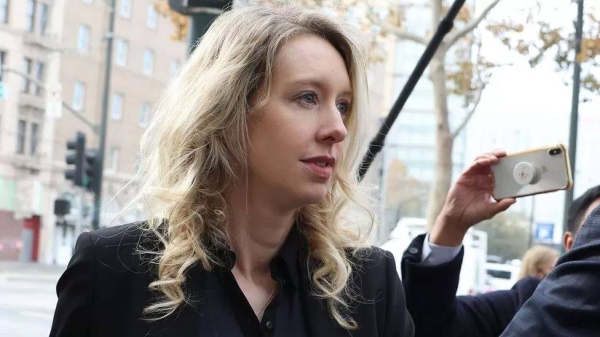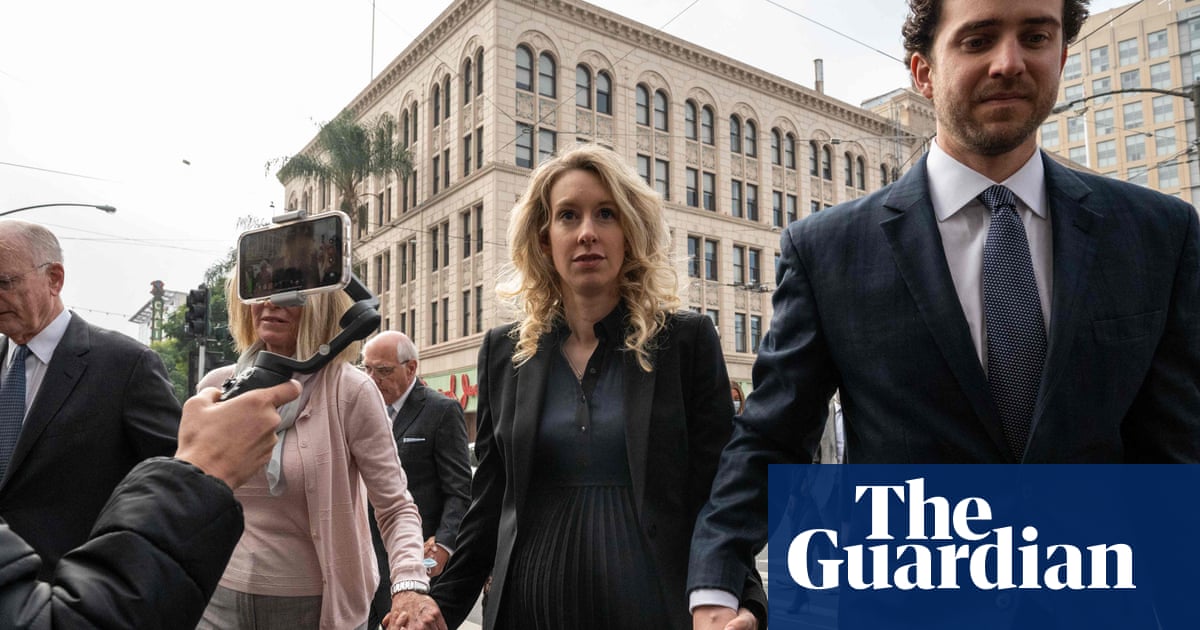
Just six years ago Forbes magazine declared her the “the world’s youngest self-made female billionaire” and the “next Steve Jobs”. Now, Elizabeth Holmes, 37, founder of the collapsed blood testing company Theranos, is facing decades in prison after being found guilty of conspiring to defraud her investors out of billions.
Holmes, a university dropout with no medical training, had fooled regulators and some of the world’s richest people, including Rupert Murdoch, Henry Kissinger and Larry Ellison, into believing she had figured out a way to test for a range of health conditions with just a pinprick of blood.
But the tests did not work, and the company was accused of often faking the results. One patient testified that a blood test revealed they were miscarrying when they were pregnant; another said they were given false-positive results for HIV.
After a number of regulatory investigations, the company – which at one point was valued at more than $9bn (£6.6bn) – collapsed in 2018. On Monday a California jury convicted Holmes of four counts of wire fraud and conspiracy to commit wire fraud.
Holmes had set her sights on becoming an inventor at an early age. She hoped to emulate her great-great-great-grandfather, who co-founded Fleischmann’s Yeast, which revolutionised the breadmaking industry in the late 1800s. At the age of nine, she told her father that what she “really want[s] out of life is to discover something new, something that mankind didn’t know was possible to do”.
While a 19-year-old student at Stanford University, she thought she had found it. Working out of the basement of her shared college house, she founded Theranos in 2003. Brimming with self-confidence, she convinced her parents to let her drop out of university and cash in an education trust they had set up for her. She used it to rent a lab and hire her first employee.
Holmes’s desire to improve medical testing was driven by a familial aversion to needles, that could cause her mother and her grandmother to faint at the sight of blood. “I really believe that if we were from a foreign planet and we were sitting here and said, ‘OK, let’s brainstorm on torture experiments’, the concept of sticking a needle into someone and sucking blood out slowly, while the person watches, probably qualifies,” she told the New Yorker in 2014 for a profile that said she had the potential to “upend the lucrative business of blood testing”.
Holmes, who helped engineer the comparisons to her idol, Jobs, by dressing in black turtlenecks, quickly became a star on the public speaking circuit. Addressing a TedMed conference in 2014, she said getting a blood test should be easier, quicker and cheaper. It should be, she said, “a wonderful” experience.
“We see a world in which no one ever has to say, ‘If only I’d known sooner’. A world in which no one ever has to say goodbye too soon,” she told the Washington DC audience. “The right to protect the health and wellbeing of every person, of those we love, is a basic human right. Yet in the United States today, healthcare is the leading cause of bankruptcy and the lack of it the leading cause of … finding out too late in the disease progression process that someone you love is really, really sick.”
The top comment under the video on YouTube says: “She did a better job playing Steve Jobs than Ashton Kutcher” (Kutcher played Jobs in the 2013 biopic Jobs.)
“Here was a photogenic, telegenic young woman posing as the female Steve Jobs,” recalled Margaret O’Mara, a historian of Silicon Valley who holds a professorship at the University of Washington. “It was an incredibly alluring narrative that everyone wanted to believe.”
Not quite everyone. Holmes’s tall tales started to unravel in 2015 – soon after Theranos hit its record $9bn valuation – when the Wall Street Journal reporter John Carreyrou began an investigation into the validity of the company’s tests.
When Carreyrou went to Holmes for comment for his story, she asked the Journal’s owner, Rupert Murdoch – a Theranos investor – to prevent its publication.
“You personally went to the owner of The Wall Street Journal to try to quash the story,” Robert Leach, an assistant US attorney, asked her during the trial. “I did,” she replied.
Carreyrou’s story was printed. Dozens more followed, leading to the collapse of the company and taking with it Murdoch’s $125m investment.












